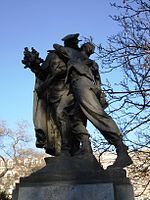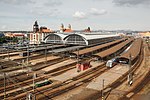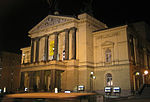Jubilee Synagogue
1906 establishments in Austria-HungaryArt Nouveau architecture in PragueArt Nouveau synagoguesMoorish Revival architecture in the Czech RepublicMoorish Revival synagogues ... and 3 more
New Town, PragueSynagogues completed in 1906Synagogues in Prague

Jubilee Synagogue (Czech: Jubilejní synagoga), also known as the Jerusalem Synagogue (Czech: Jeruzalémská synagoga) for its location on Jerusalem Street, is a synagogue in Prague, Czech Republic. It was built in 1906, designed by Wilhelm Stiassny and named in honor of the silver Jubilee of Emperor Franz Joseph I of Austria.
Excerpt from the Wikipedia article Jubilee Synagogue (License: CC BY-SA 3.0, Authors, Images).Jubilee Synagogue
Jeruzalémská, Prague New Town
Geographical coordinates (GPS) Address External links Nearby Places Show on map
Geographical coordinates (GPS)
| Latitude | Longitude |
|---|---|
| N 50.084722222222 ° | E 14.431944444444 ° |
Address
Jubilejní synagoga
Jeruzalémská
116 47 Prague, New Town
Prague, Czechia
Open on Google Maps









